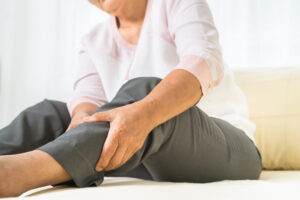Poor Circulation Symptoms & Treatments
Do you know the symptoms of poor circulation? If you don’t, you may be experiencing problems without understanding the cause. You should never ignore circulatory issues, because poor circulation can have a major impact on your health. Circulatory problems can make it harder to heal from injuries because they prevent the tissues in your body from getting the blood they need. Fortunately, there are treatments for poor circulation, as well as steps you can take to prevent it.
 The first step in addressing poor circulation symptoms is knowing what to look for. The first symptom you might notice is coldness in the extremities. If your hands, feet, or legs tend to be cold, be on the lookout for further symptoms of poor blood circulation. If you have poor circulation in the legs, symptoms might include heaviness, swelling, or lack of hair growth in the legs and feet, numbness, or tingling, achy or restless legs, skin discoloration, or toenails that stop growing. You might also experience varicose veins or spider veins, tingling or numbness, fatigue or dizziness, or pelvic discomfort or pain. As your circulation problem gets worse, you may develop ulcers or split, weeping skin. Typically, you’ll notice the signs of poor circulation primarily in the arms and legs, but they can occur anywhere in the body and can lead to serious problems like infections, blood clots, and dead tissue if left untreated.
The first step in addressing poor circulation symptoms is knowing what to look for. The first symptom you might notice is coldness in the extremities. If your hands, feet, or legs tend to be cold, be on the lookout for further symptoms of poor blood circulation. If you have poor circulation in the legs, symptoms might include heaviness, swelling, or lack of hair growth in the legs and feet, numbness, or tingling, achy or restless legs, skin discoloration, or toenails that stop growing. You might also experience varicose veins or spider veins, tingling or numbness, fatigue or dizziness, or pelvic discomfort or pain. As your circulation problem gets worse, you may develop ulcers or split, weeping skin. Typically, you’ll notice the signs of poor circulation primarily in the arms and legs, but they can occur anywhere in the body and can lead to serious problems like infections, blood clots, and dead tissue if left untreated.
What causes poor circulation, and who is at highest risk? Older people often suffer from circulatory issues, but they can happen to anyone. Atherosclerosis, caused by hardening arteries, can cause poor blood circulation, and so can diabetes. Being inactive or obese raises your risk of circulatory problems, and so does smoking, which damages the blood vessels. Venous insufficiency, a problem with the valves in your blood vessels that allows blood to pool in the veins, can cause circulatory issues, including varicose veins.
Fortunately, there is help. Poor circulation treatment may involve medication or procedures, but it will also likely include some lifestyle change. Getting regular exercise and maintaining a healthy weight can help, and so can wearing compression garments. If your legs are swollen, elevating them whenever you’re sitting can be beneficial. One of the most important factors in poor blood circulation treatment is to watch what you’re putting into your body. Don’t smoke, and pack your diet with heart-healthy, nutritious foods, including fruits, vegetables, whole grains, lean proteins, and healthy fats.
A vascular specialist can create a plan to improve your circulation, and most of the time, for poor circulation in legs, treatment will involve a vascular procedure. Sometimes an angioplasty procedure will be done to widen your femoral artery, or bypass surgery will redirect blood flow around a blockage to increase circulation in the legs and feet. If your circulatory issues involve varicose veins, there are many different minimally invasive procedures that can help.
If you’re seeking treatment for poor circulation, trust the board-certified physicians at the Arizona Vein & Laser Institute. Using the most advanced technology, the vascular and cardiovascular surgeons at the Arizona Vein & Laser Institute provide care for all types of venous diseases. With over 40 years of experience, our team of experienced physicians can devise the right treatment plan to address your venous disease problems. For more information contact us through our website.
